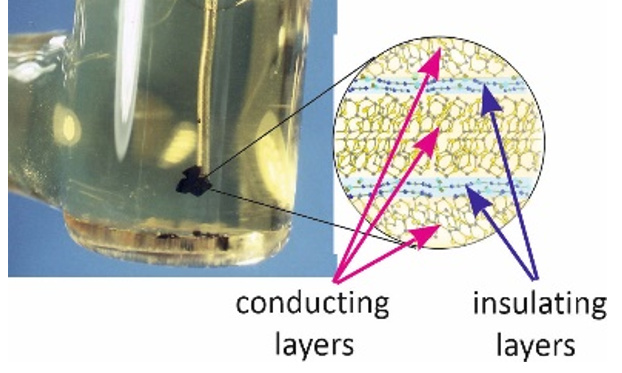Organic Metals
From the everyday experience one normally identifies organic materials as electrical insulators. However, there is a class of synthetic molecular charge-transfer salts, which exhibit metallic conductivity, some of them being even superconductors.

Coherent heavy charge carriers in an organic conductor near the bandwidth-controlled Mott transition
Research Article
|
Physical Review B
107, 075139
(2023)
Preprint: arXiv:2208.03230
Research Article
|
npj Quantum Materials
6, 11
(2021)
Research Article
|
Physical Review Letters
127, 147204
(2021)
Preprint: arXiv:2106.02130
Research Article
|
Physical Review B
99, 125136
(2019)
Research Article
|
Physical Review B
97, 054430
(2018)
The key common features of these crystalline organic metals,
- extremely high electronic anisotropy: quasi-one & quasi-two-dimensional conduction bands,
- strong electron-electron and electron-phonon interactions,
give rise to very rich electronic phase diagrams and fascinating phenomena such as charge- and spin-density waves, quantum electric-dipole- and spin-liquid states, topological excitations, etc. Of special interest is the emergence of superconductivity in close proximity to various insulating ground states, similarly to what happens in other exotic superconductors like high-Tc cuprates, iron-pnictides and chalcogenides.
